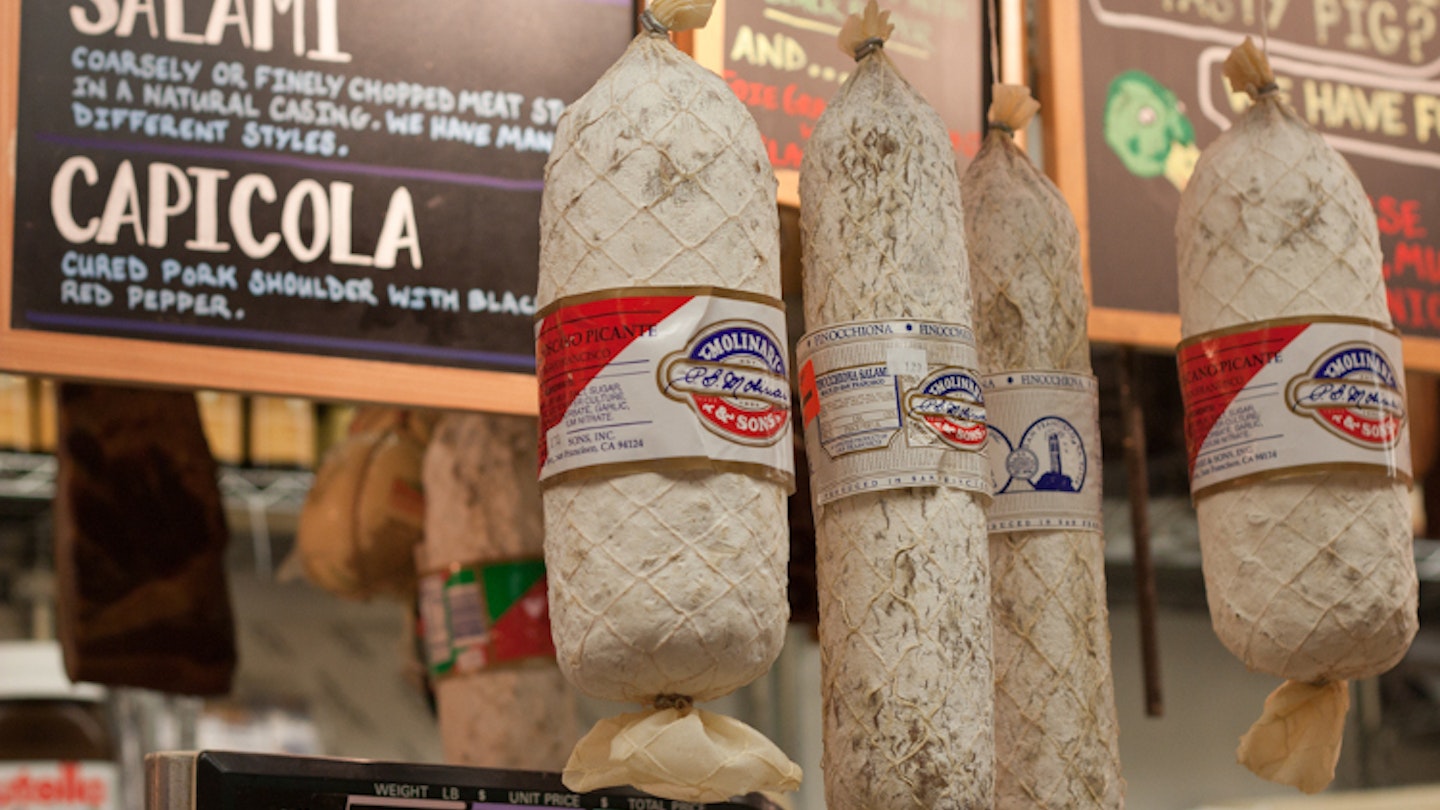Tourists associate the City of Brotherly Love with its most famous sandwich – the cheesesteak, created by South Philly hot dog vendor Pat Olivieri for his taxi driver clientele in 1930. However, regional food choices in Philadelphia extend well beyond Pat’s or Geno’s, provolone or cheese whiz, with or without fried onions. Landmark delis, markets, and noodle shops, still in business nearly a century after opening, pay tribute to the city’s colorful immigrant past; a few doors down, modern chefs and bakers riff on classic dishes, from Jewish gravlax to Korean fried chicken, representing the city’s diverse range of cultural and ethnic groups. Have your cheesesteak – and eat one, too, from the rival stand across the way – but save some room for Philly’s other foodie delights.

That’s amore: Philadelphia’s Little Italy
Italians do it better, as they say: a rule that’s especially true in Philadelphia, home to the second-largest Italian-American population in the United States. The center of the action is South Philadelphia’s rustic 9th Street Italian Market. The largest operational outdoor market in the country is iconic – Rocky Balboa runs through it as part of his training routine in the Oscar-winning 1976 film Rocky – and timeless, lined with old-fashioned cheese shops, produce stands, bakeries, and butchers. Di Bruno Bros, the gourmet cheese and meat purveyor founded by a pair of Italian immigrant brothers, got its start here in 1939. These days, stop into the original shop – or Di Bruno Bros locations on Rittenhouse Square and inside the historic Franklin Residences building – for cappuccino and chocolate chip ricotta cannoli.
Chinese noodles, hot and hand-drawn
For plenty of Philadelphia natives, the city’s petite Chinatown is synonymous with one venue in particular: Nan Zhou Hand Drawn Noodle House. In a small restaurant kitchen on Race Street, Fuzhounese Chef Zeng Feng Zhang stretches, loops, pounds, and weaves his floury dough to craft Beijing-style la mian noodles, made to order for soups and stir-fries. On a larger, more modern scale, Han Dynasty is Chef Han Chiang’s modern Szechuan mini-chain, now with six locations in Philadelphia. Come for his fiery dan dan noodles, customizable to one to ten spice levels – if it’s hot enough for Anthony Bourdain (Han Dynasty was featured on The Layover), chances are it’ll be hot enough for you, too.
West Africa in West Philly
For a city in which nearly half the population identifies as African-American, Philadelphia’s African-influenced eating options are relatively scarce. However, a few West Philly dining institutions have stood the test of time: Senegalese restaurant Kilimandjaro is locally famous for its Yassa Fish, a whole fish cooked in an onion and lemon sauce, as is Eritrean / Ethiopian restaurant Dahlak with its Doro Wat, tender chicken braised in a spicy tomato and onion stew.

Challah and matzoh balls, big plates and small
The seventh-largest Jewish population in the country resides in Philadelphia. Famous 4th Street Delicatessen, a corner deli founded in 1923, specializes in overstuffed corned beef and pastrami sandwiches, smoked fish, cheese kugels (noodle pie), challah (Jewish bread) stuffing, kreplach (stuffed dumplings), and matzo ball soup. For a Philadelphian twist on a Jewish classic, ask for the pastrami cheesesteak. West along South Street near Rittenhouse Square, chefs Michael Solomonov and Steven Cook reimagine these classic dishes at the modernist Jewish bistro Abe Fisher. Creative small plates, inspired by the cuisine of the Jewish diaspora, include corned pork belly served with a house-baked challah pretzel and borscht tartare.
Puerto Rican pork and plantains
Outside of Puerto Rico itself, Philadelphia has one of the world’s largest populations of Puerto Ricans. The community centers around Spring Garden, Kensington, and North Philadelphia, where no-frills eateries serve traditional dishes like mofongo (mashed plantains, garlic, and pork cracklings) and pernil (pork). Freddy & Tony’s is one of the most popular and authentic: come with an appetite, ask for extra tostones (fried plantains brushed with garlic) and don’t skip the rich Tres Leches cake for dessert.

Pretzel to dumpling to donut
From Sicilian pastries to Jewish blintzes and Pennsylvania Dutch-style cakes and pies, Philadelphia has deep-rooted baking traditions – the soft pretzel was first invented and developed here by German and Swiss immigrants. Reading Terminal Market, a downtown covered market that first opened its doors in 1892, is an ideal place to sample a range of regional baked goods. Look for hand-rolled Amish-style hot pretzels at Miller’s Twist, apple dumplings at Dutch Eating Place, and homemade cinnamon buns at Beiler’s Bakery.

Leave the market and try the donuts that are all the rage right now on Philly’s contemporary foodie scene: the exotic deep-fried treats at one of Federal Donuts’ five locations. ‘Standard’ options include Vanilla-Lavender and Indian Cinnamon; ‘Fancy’ donuts run the range from Blackberry-Anise to Milk Chocolate-Sea Salt. Moreover, be sure to show up early for the best selection. The donut shops open at 7am and usually run out of stock well before lunchtime, when you can indulge instead on Federal Donuts’ other deep-fried specialty – Korean-style chicken, dipped in a cornstarch batter and fried twice for crispness, then tossed in the donut shop’s signature sauce.
This article was originally published in 2015 and updated in 2018.




